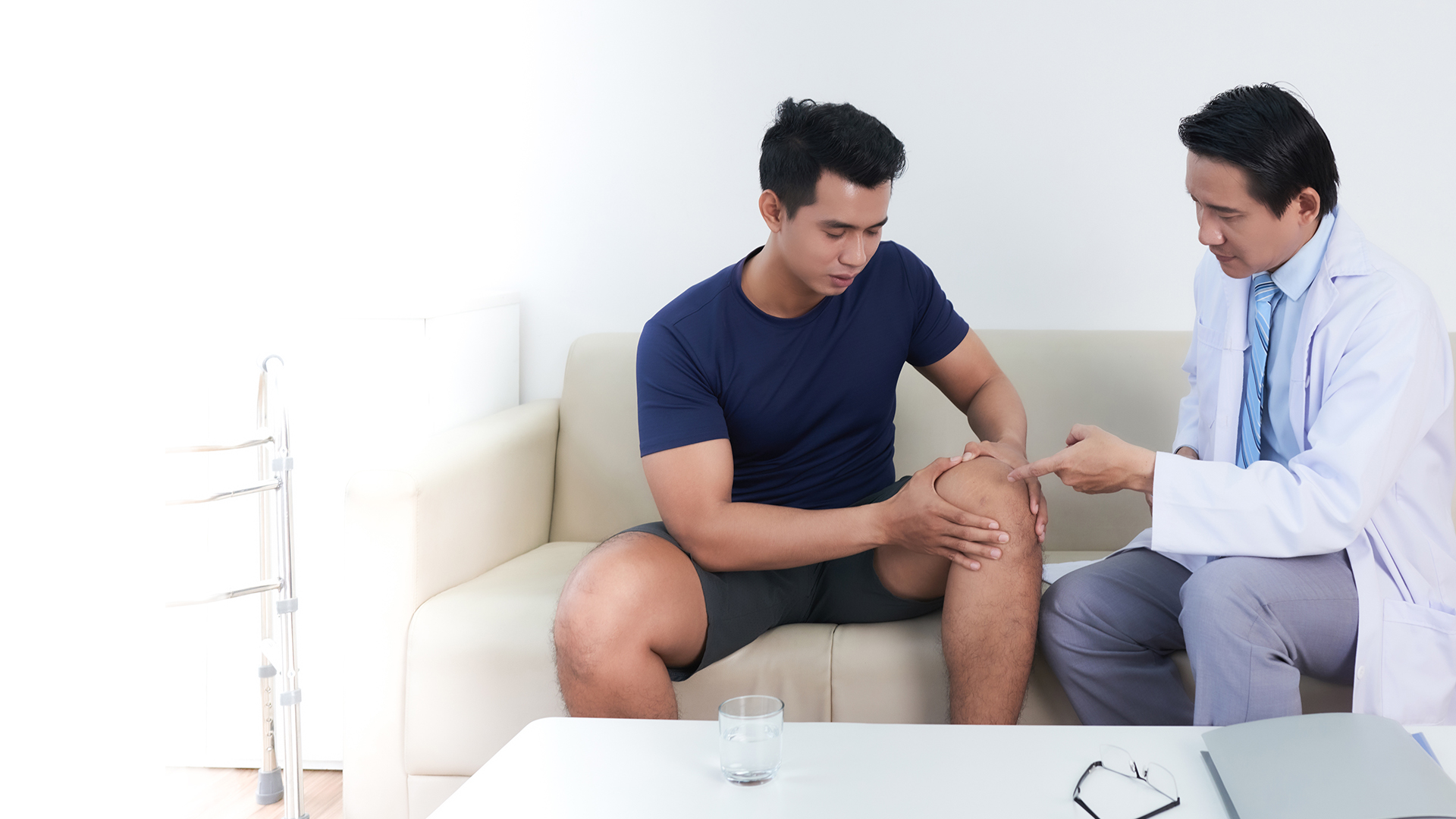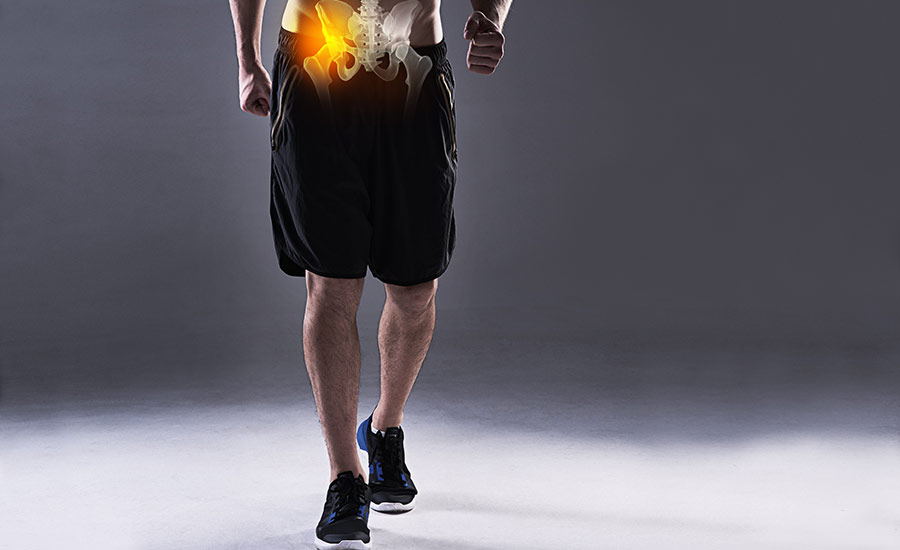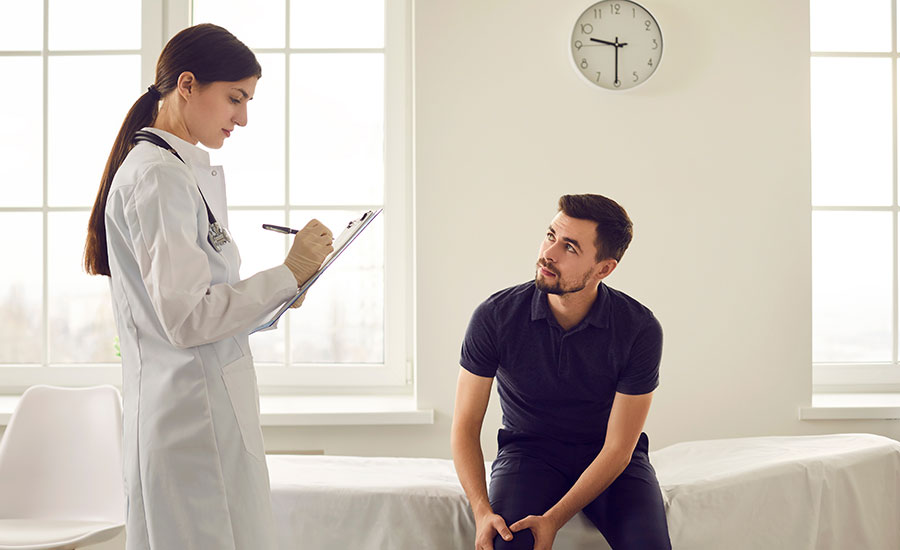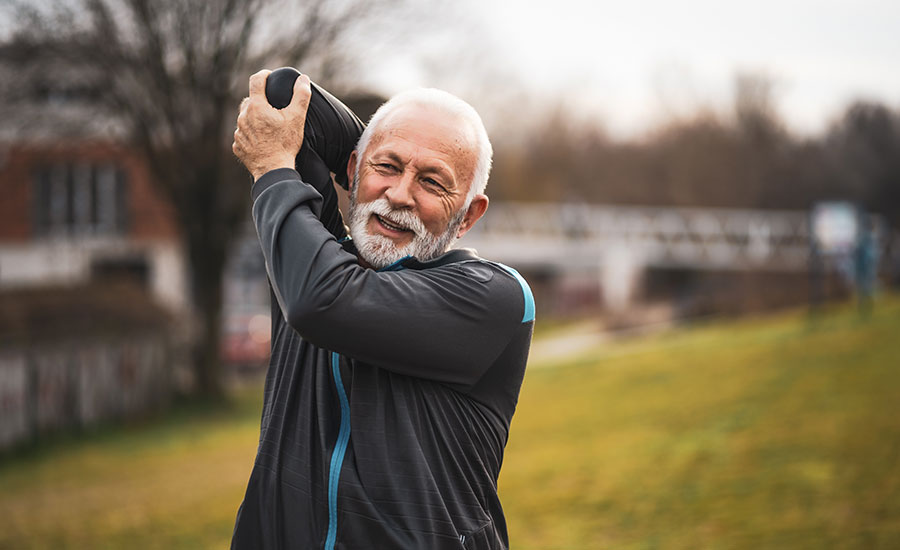
What Is Knee Arthroscopy?

Meet Our Knee Arthroscopy Specialists
Find a Specialist Near You
Get the care you deserve close to home at one of our New Jersey or New York Locations.
About Knee Arthroscopy
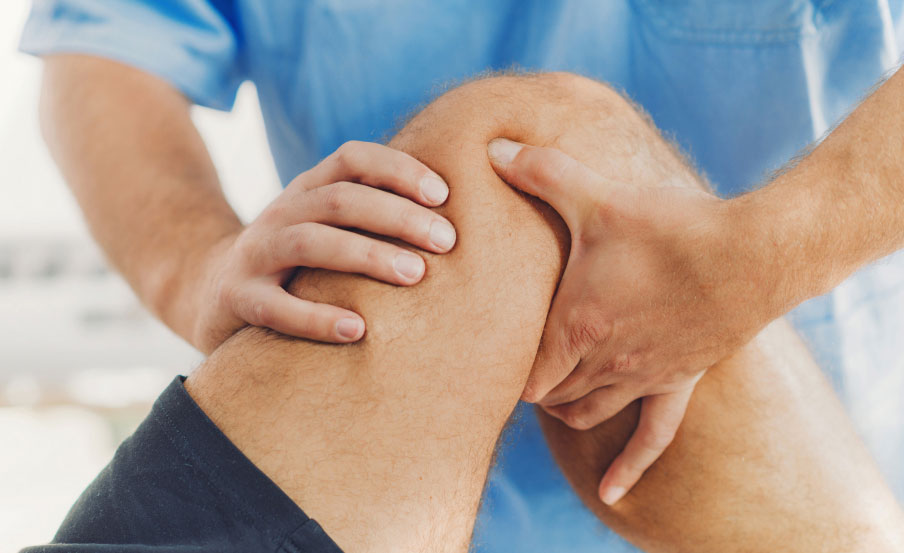
Who Might Need Knee Arthroscopy Surgery?
Patients who might benefit from knee arthroscopy surgery are those who have persistent knee pain or swelling that is not responding to conservative treatments such as rest, ice, compression, and physical therapy.
Knee arthroscopy surgery may be recommended for patients who have:
- Torn meniscus
- ACL or PCL tear
- Knee joint infection
- Knee arthritis
- Patellar tracking disorder
- Loose bodies in the knee joint
The decision to undergo knee arthroscopy surgery is typically made by an orthopedic surgeon after a thorough evaluation of the patient’s physical condition, symptoms and medical history, and diagnostic tests such as X-rays, MRI, or CT scans. Knee arthroscopy surgeries are less invasive and offer faster recovery but in severe cases knee replacement surgery might be a necessity as well.
Our knee arthroscopy specialists at OrthoEast include Dr. Casey Pierce, Dr. Thomas A. Novack, Dr. Anthony Festa and Dr. William Matarase.
Our board-certified physicians, provide comprehensive care to each and every patient, which allows us to guide you through your procedure with enhanced comfort and confidence.
Conditions That Require Knee Replacement Surgery
There are several conditions that may require knee arthroscopy surgery, including:
A torn meniscus is a common knee injury that can cause pain, swelling, and difficulty with movement. This injury can occur from twisting or turning the knee, and can happen to athletes as well as non-athletes.
During knee arthroscopy surgery to repair a torn meniscus, we make small incisions around the knee joint and insert an arthroscope — a small camera that displays images of the inside of the knee on a monitor. Then we use small surgical instruments to trim or repair the torn meniscus.
An ACL or PCL tear is a serious knee injury that can cause instability and limited mobility. This injury can occur from sudden stops or accidents, and is commonly seen in athletes who play high-impact sports.
If the ligament is only partially torn, we may be able to repair it using sutures or other devices. If the ligament is completely torn, we may need to reconstruct the ligament using a patient or donor graft. The graft is typically anchored to the bone with screws or other devices.
Knee joint infections can occur due to various reasons, including open wounds or surgeries, and can cause pain, swelling, and stiffness in the knee joint. Knee arthroscopy can often be necessary to treat this condition.
In some cases, we may need to perform a more extensive open surgery to fully clean out the joint and remove any infected tissue and prescribe antibiotics to help clear the infection.
Knee arthritis is a degenerative joint condition that can cause pain, stiffness, and limited range of motion in the knee joint. It can be caused by wear and tear, or by autoimmune conditions.
It’s important to note that knee arthroscopy surgery is not typically used as a first-line treatment for knee arthritis, and other non-surgical treatment options such as physical therapy, medication, and lifestyle changes are often recommended first.
In some cases, more extensive open surgery such as knee replacement may be necessary to fully address the underlying arthritis.
Patellar tracking disorder is a condition where the kneecap moves out of its normal position, causing pain and instability in the knee joint.
Knee arthroscopy surgery is not always effective in treating patellar tracking disorder, and other non-surgical treatment options such as physical therapy, bracing, and activity modification are often recommended first. In some cases, a more extensive open surgery may be necessary to fully address the underlying issue.
Loose bodies in the knee joint can occur due to a variety of reasons, including injury, arthritis, or wear and tear, and can cause pain and limited range of motion.
Knee arthroscopy surgery for loose bodies in the knee joint is usually performed under general anesthesia, where small incisions are made around the knee joint to remove the loose bodies.
The procedure typically takes around 30 minutes to an hour, depending on the size and location of the loose bodies. After the surgery, the patient is monitored in a recovery room until the anesthesia wears off.
Synovitis is an inflammation of the synovial membrane, which lines the knee joint. This condition can cause pain, swelling, and stiffness in the knee joint.
Knee arthroscopy can be an effective treatment for synovitis, as it allows us to see and treat the inflamed tissue.
The procedure for synovitis is typically performed on an outpatient basis, meaning the patient can go home the same day as the surgery.
How Is Knee Arthroscopy Surgery Performed?
A knee arthroscopy is usually performed under general or local anesthesia, during which a small incision is made near the knee joint. A thin tube with a camera and light, called an arthroscope, is inserted into the incision to provide a clear view of the joint.
Once the arthroscope is in place, we can use other small instruments inserted through additional incisions to perform the necessary repairs or procedures. These procedures may include removing damaged tissue, repairing ligaments or cartilage, or removing debris from the joint.
Knee arthroscopy is usually performed on an outpatient basis, allowing most patients to return home on the same day. The duration of the procedure typically ranges from 30 minutes to an hour, depending on the complexity of the underlying condition that is being treated.
Types of Knee Arthroscopy Surgeries at OrthoEast
At OrthoEast, we offer multiple types of knee arthroscopy surgeries to treat different knee joint conditions. Some of the surgeries performed by our board-certified physicians include:
A meniscectomy is a surgical procedure in which a portion or the entire meniscus of the knee joint is removed through knee arthroscopy. The meniscus is a C-shaped piece of cartilage that acts as a shock absorber between the thighbone (femur) and shinbone (tibia) in the knee joint.
This type of surgery is typically performed when a meniscus tear is too large or complex to be repaired. The procedure is performed under general or regional anesthesia, in which small incisions are made around the knee joint to remove the damaged areas.
In meniscal repair, a torn meniscus is fixed using sutures or other techniques.
The meniscus is a C-shaped piece of cartilage that acts as a cushion between the thighbone (femur) and shinbone (tibia) in the knee joint.
A meniscal repair is typically recommended for younger patients with a stable knee joint and a relatively small meniscus tear that is located in the outer edge of the meniscus.
The ACL and PCL ligaments are two of the four major ligaments that help in stabilizing the knee joint. These ligaments can become damaged or torn due to a sports injury, trauma, or wear and tear over time.
During knee arthroscopy surgery to repair an ACL or PCL tear, we make small incisions around the knee joint and insert an arthroscope — a small camera that displays images of the inside of the knee on a monitor. We then use small surgical instruments to repair or reconstruct the torn ligament.
During ACL or PCL reconstruction surgery, a graft (a piece of tissue) is used to replace the damaged ligament. The graft may be taken from the patient’s own body (autograft) or from a donor (allograft). The graft is placed into the knee joint through small incisions and secured to the bones with screws or other devices. The new ligament will eventually heal and become a part of the patient’s own tissue.
A chondroplasty is a surgical procedure that is performed to smooth out and reshape damaged cartilage in the knee joint. This type of knee arthroscopy surgery is typically used to treat patients with cartilage damage due to injuries or conditions such as osteoarthritis.
During the procedure, we use specialized tools to remove or reshape the damaged cartilage, which can help to reduce pain and improve knee function.
Loose body removal is a type of knee arthroscopy surgery in which small pieces of bone or cartilage that have become loose in the knee joint are removed.
These loose bodies can cause pain, swelling, and joint locking or catching, and can be caused by a variety of factors including injuries, arthritis, or wear and tear.
During the knee arthroscopy, we remove the loose bodies to reduce pain and restore normal knee function.
A synovectomy is a surgical procedure that is sometimes performed as part of knee arthroscopy to remove inflamed or diseased synovial tissue from the knee joint.
Synovial tissue lines the inside of the knee joint and produces synovial fluid, which helps to lubricate and cushion the joint.
In some cases, however, the synovial tissue can become inflamed due to injury, infection, or conditions such as rheumatoid arthritis, leading to pain, swelling, and stiffness in the joint.
How To Prepare For Knee Arthroscopy Surgery
Before undergoing knee arthroscopy surgery at OrthoEast, one of our specialists will give you detailed instructions on how to prepare for the procedure. These instructions may include:
- Avoid food or drinks: For a certain period of time before the surgery, you may need to avoid food and beverages to prepare your body for the procedure.
- Avoid medications: Certain medications or supplements may need to be temporarily stopped before the surgery.
- Arrange a ride home: Be sure to schedule a ride post procedure, as you will not be able to drive yourself due to the effects of anesthesia.
- Make yourself comfortable: Wearing loose, comfortable clothing on the day of the surgery could help you feel relaxed before the procedure.
- Provide documentation: Bring all necessary paperwork with you to our surgery center.
Our team will walk you through preparation and answer any questions you might have to make sure you’re as informed, comfortable and confident as possible about your procedure.
How Long Does Knee Arthroscopy Take?
Knee arthroscopy surgery usually takes between 30 minutes and one hour to complete, although this can vary depending on the complexity of the condition being treated. If additional repairs or procedures are needed, the surgery could take longer.
After the surgery, you are typically monitored for a brief period in the recovery room before being discharged to go home. Most patients are able to go home on the same day as the surgery.
What To Expect After Knee Arthroscopy Surgery
After knee arthroscopy surgery, you will need to rest and elevate the affected leg.
Ice packs can be used to reduce swelling and pain, and your doctor may also prescribe pain medication to help manage discomfort during the recovery period.
You may need to use crutches for a few days or weeks after the procedure, depending on the extent of the surgery. Physical therapy may also be recommended to help improve strength and range of motion in the affected knee.
In general, you should be able to resume normal activities within a few weeks to a few months after knee arthroscopy surgery. However, this timeline can vary depending on the extent of the surgery and your individual recovery progress.
What Is the Typical Knee Arthroscopy Recovery Time?
Recovery time after knee arthroscopy surgery can vary depending on the extent of your surgery and your individual healing process. In general, most patients are able to resume normal activities within a few weeks to a few months after the procedure.
During the initial recovery period, you will need to rest and elevate the affected leg and use ice packs to reduce swelling and pain. Physical therapy may also be recommended to help improve strength and range of motion in the knee.
It is important to follow instructions from our OrthoEast specialists carefully during the recovery period to ensure a successful result. Make sure to attend all follow-up appointments with our team to monitor your progress and make any necessary adjustments
Schedule a Consultation With Our Knee Arthroscopy Specialists at OrthoEast
We understand that receiving a lot of information at once can be daunting. That’s why our compassionate team is here to support you throughout the process. To start your journey towards finding a solution for your pain, schedule a consultation with OrthoEast at one of our locations in New Jersey or New York:
- Wayne, NJ
- Morristown, NJ
- Clifton, NJ
- Linden, NJ
- Wall Township, NJ
- New York, NY
